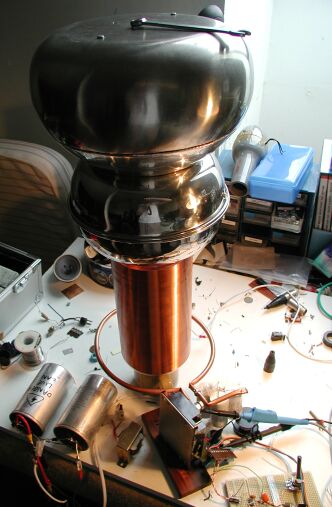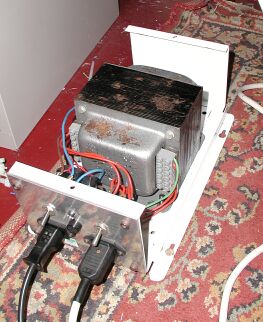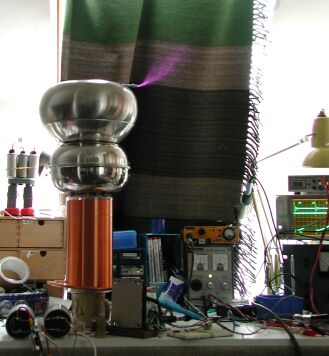


I spent a while making sure it was reasonably in tune, and replaced the bench power supply with a voltage doubler (two 450V 1000uF caps and two diodes) running off a variac and isolating transformer. I could now charge the 4uF tank capacitor up to over 1kV. I also made sure all the joints in the tank circuit were soldered :)

Tuning was a funny thing. I got the best results with very tight coupling, so tight that the first notch happened after 2 cycles (!) To achieve first notch quenching, the IGBT had to be on for a mere 15uS. With only 2 cycles on-time, the off point wasn't very critical, so there was no need for the zero-current turnoff circuit I used in the previous coil. Something would have to go seriously wrong to knock it out far enough to cause damage.

I could only turn the variac up halfway, any more and the secondary flashed over. Bang energy at this point (calculated from scope traces of tank cap voltage) was 0.65 Joules. The break rate was 400bps. Hence, the input power for this picture was (400 * 0.65)=300 Watts. It produced about 9" streamers which didn't show up very well.
After 20 seconds the brick didn't even get warm, that was with no heatsink! So I think we can up the power some more! Obviously we can't increase the bang energy without trashing the secondary, hence, we need more bps or a bigger secondary. But I noticed that the secondary _did_ get warm.